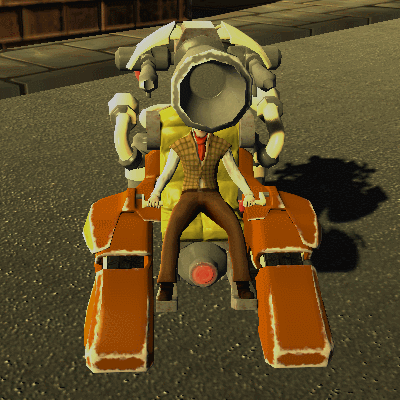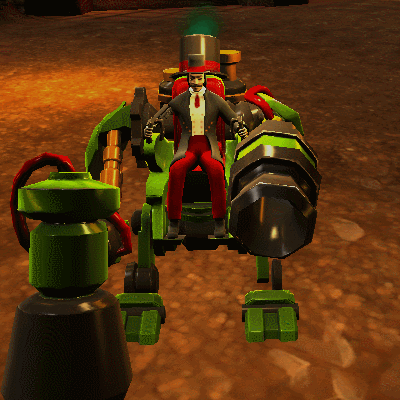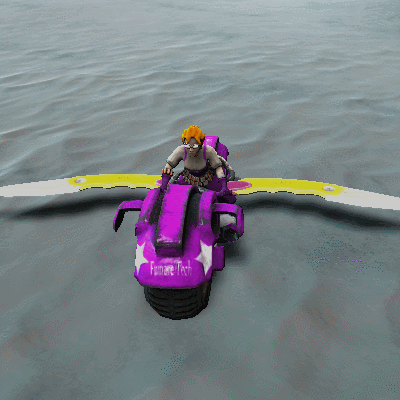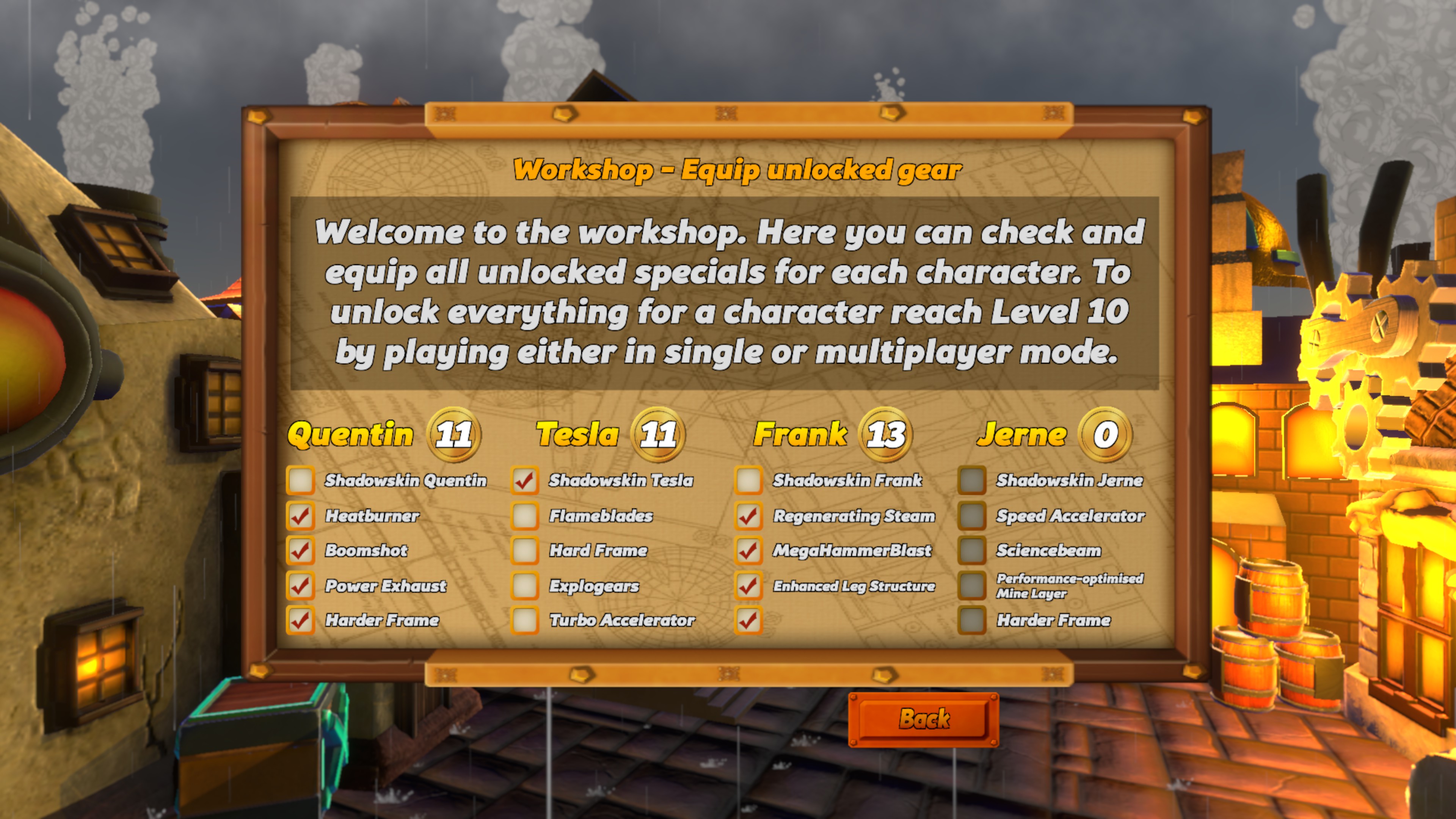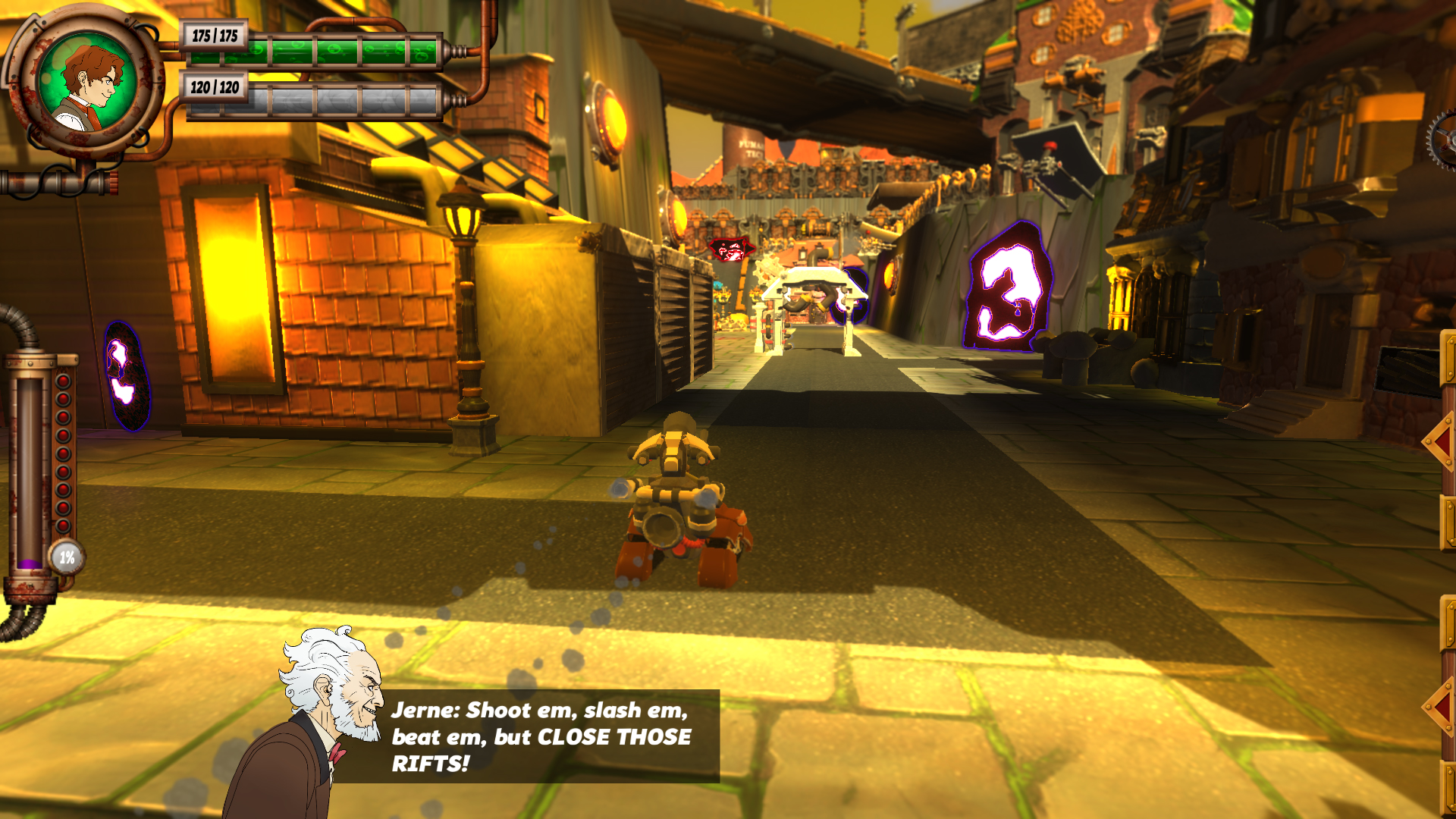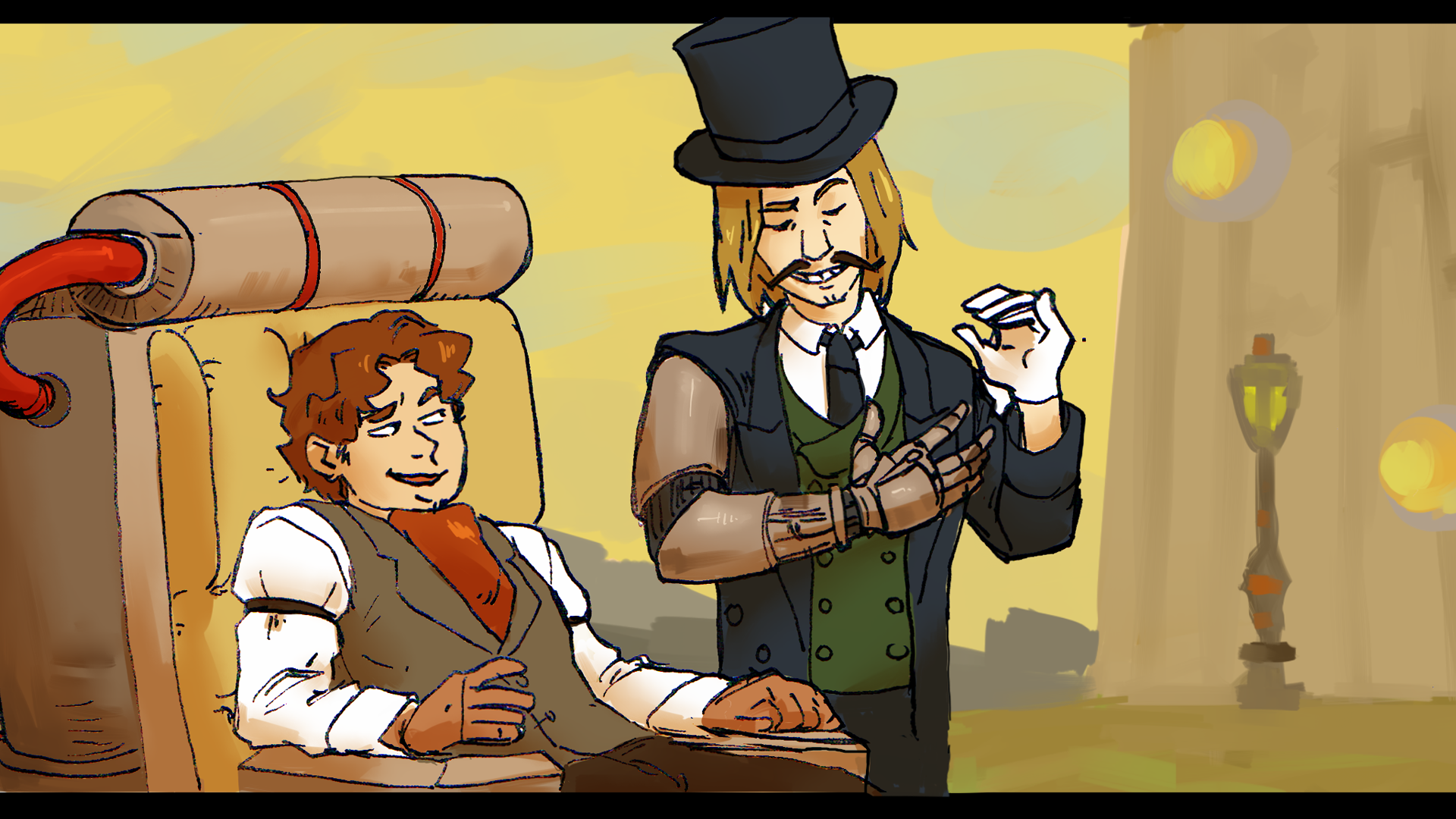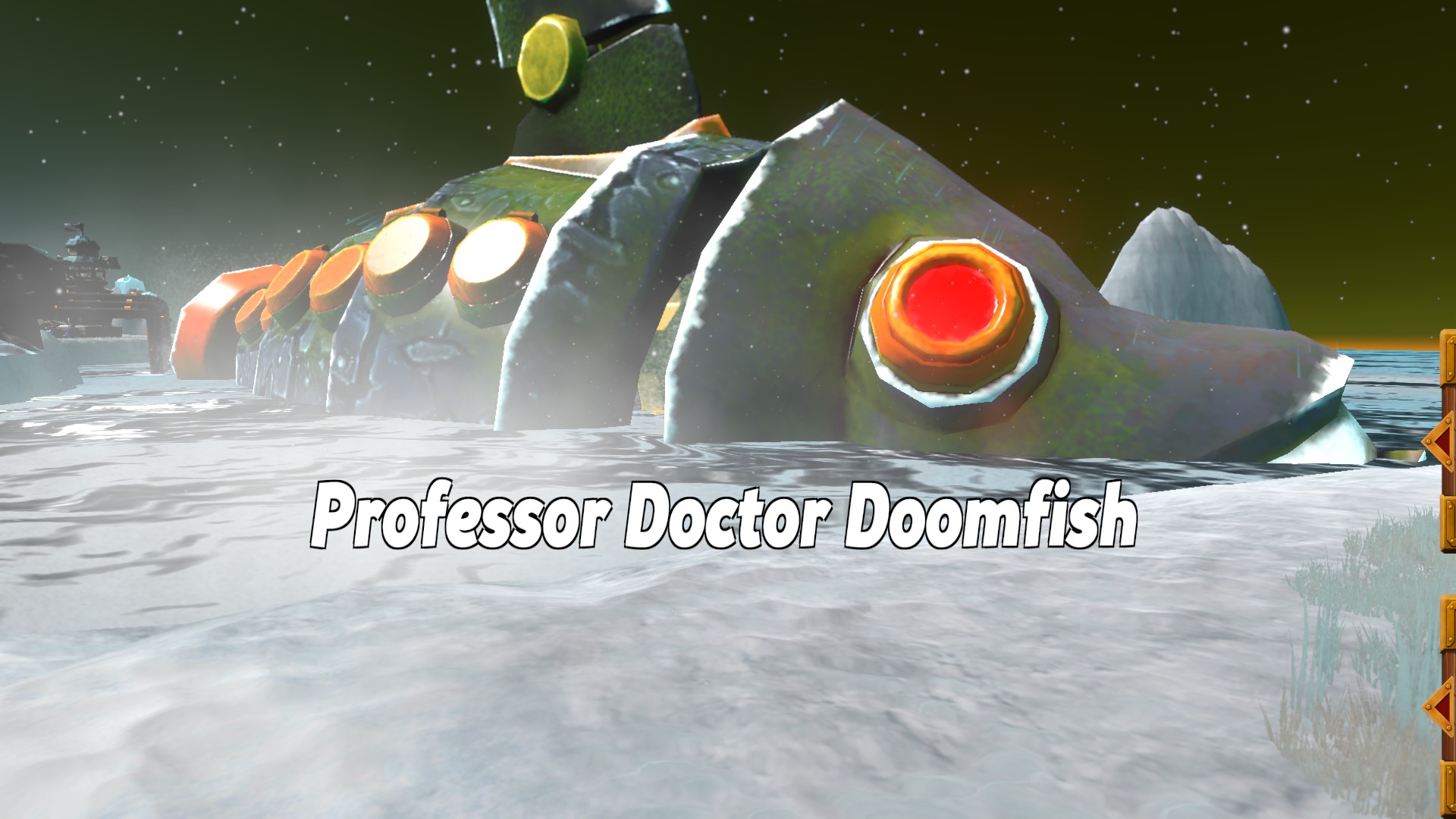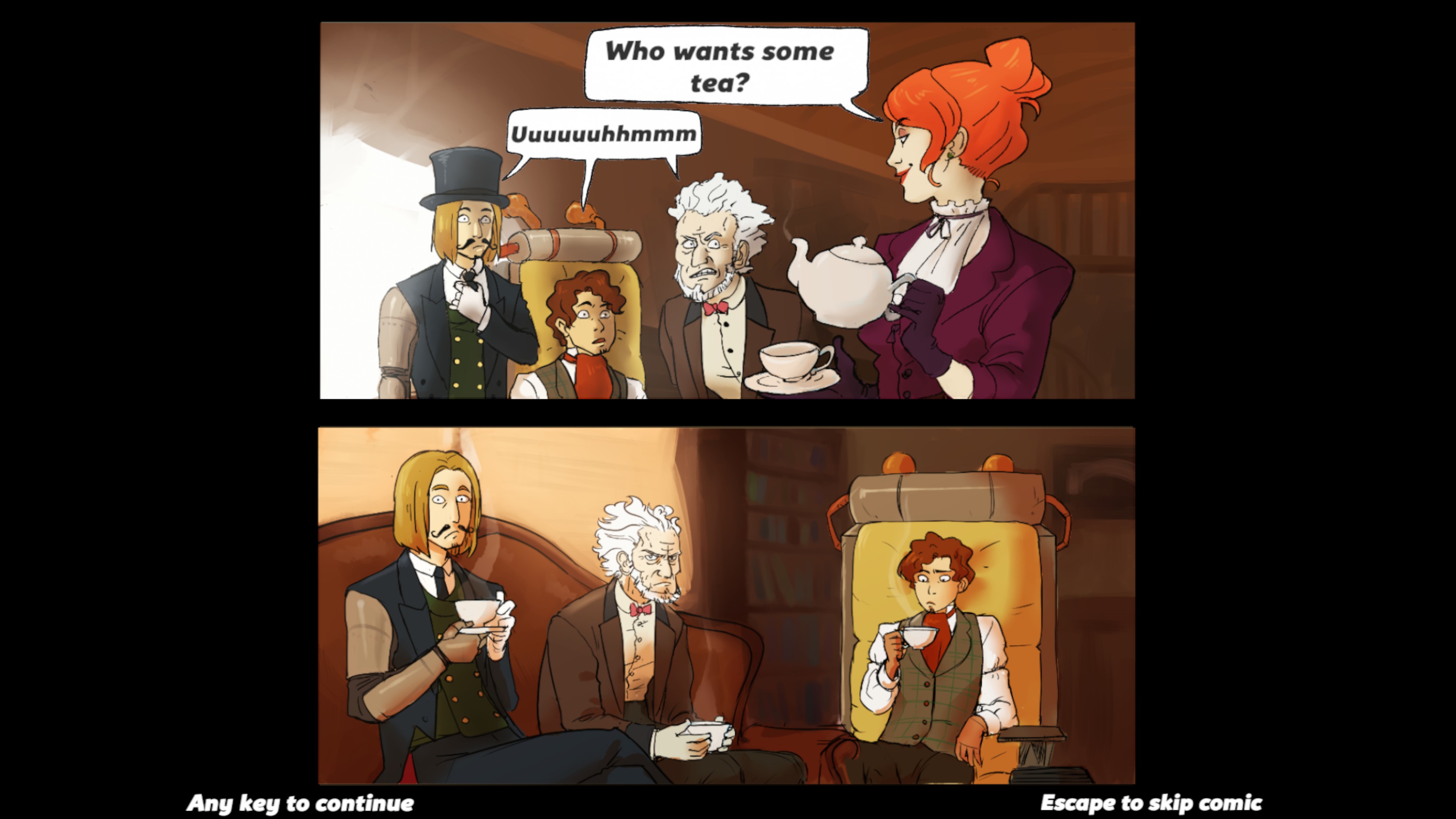Playing As Myself: Hands On With Steampunk-Inspired 'Goggles: World of Vaporia'
(Note: In the interest of full disclosure, I provided the voices for the characters of Frank Frankson and Vules Jerne. Other than a one-time payment for those voiceover services, I have no financial investment, royalties or association with bit2good.)
Munich-based bit2good, a newcomer to the PC gaming world, released its flagship project, Goggles: World of Vaporia, which was first slated for a mobile Android release as a 2D side-scroller and evolved into a third-person smash-and-blast steampunk adventure shooter for the PC in a matter of months. The game was given life on Steam thanks to a successful Steam Greenlight campaign last July, with only 16 days passing before receiving the necessary community votes to come to market.
Goggles: World of Vaporia was recently released on Steam, and developer bit2good has been hastily putting out patches to improve the company's first outing in the big leagues. Like most PC game releases, there were a handful of pesky day-one glitches, but bit2good, at least, has provided speedy updates, with a seemingly genuine interest in making Goggles better with every passing day.
It's always a pleasure when I get the chance to write a hands-on piece with a new PC game. It's even cooler when it's a game that I played a small part in. It's hands-on time with myself, in a way.
Admittedly, having had a small part in its creation, I harbor high hopes for this game, but primarily that simply comes from a desire to see an up-and-coming game developer perhaps gain a little steam in the industry as a result of its strong effort and respectable accomplishments in the process of bringing the world of Vaporia to life.
Let's take a closer look at Goggles: World of Vaporia.
The Story
Goggles takes place on the city-planet Vaporia, where Fumare Tech automatons (steam-powered worker-bots) run the show, providing labor for the world's most menial tasks, such as trash removal, logging and mining. Famed inventor Master Vules Jerne is about to unveil his latest discovery: multiple dimensions and the creation of goggles with which to see into these new parallel universes that are intertwined with Vaporia.
Get Tom's Hardware's best news and in-depth reviews, straight to your inbox.
Jerne is attacked by strange shadow creatures emerging from a portal ripped into existence inside his lab, and he barely escapes thanks to the help of his apprentice, Quentin Quaint. Joined by long-time friend Frank Frankson and black-market arms dealer Tesla O'Tool, it's up to our four heroes to explore Vaporia, close the portals, fight back automatons, recover the goggles and save the world.
The story is narrated with detailed comic-book-styled illustrations accented with character voiceovers (which I provided voices for). The story itself doesn't seem to go in any particular direction, and it is mostly cheeky banter among the game's heroes. However, keeping in mind the target demographic of Goggles, it's easy to see how this could keep younger gamers entertained.
The dialogue isn't the most syntactic, with some grammatical errors you could expect from a German developer translating to British English meant for international consumers, but it presents a jovial journey through the lands of Vaporia by explaining each zone's importance, history and crucial plot points. There's even time for tea.
Characters, Vehicles, Weapons And Steam
Each hero drives a unique steampunk-inspired vehicle with different weapons, abilities, upgrades and mobility. Quentin is bound to his wheelchair but is one of the most powerful characters, with his cannon and flame throwers. His special ability also packs quite a punch, with a flame nova attack and rapid-fire cannons draining your steam until it's all gone (or disengaged). Fortunately, Quentin also has very fast resource replenishment when collecting health or steam from fallen enemies and stations around the area.
Frank offers an excellent combination of a long-range rocket launcher, smashing hammer and thick armor plating for extra health. He's rather slow as a result of all his heavy hardware, but he is also the only character that can jump (using the spacebar), allowing him to bypass certain obstacles and avoid damage. His special move launches his steam-powered smashing machine through the air with a devastating hammer attack. However, steam and health regeneration is slow, even in stations.
Tesla O'Tool is the only character that feels like a racer, with a motorcycle that deploys bladed fins for melee drive-by damage and can also fire a metal disk shooter for ranged attacks. Her special ability shields her in an impenetrable bubble until your steam runs out. She regenerates health quickly, but steam is slow to replenish.
Master Vules Jerne drives a hovercraft that can lay mines on the ground or shoot an electric beam at enemies. His special ability raises the craft high into the air and re-positions the camera above the vehicle (top down), and then he fires a thick electric beam controlled by your mouse. The discharge will persist until you are out of steam. His health and steam both regenerate at average speed.
Each player has their own upgrades, which are available in the Workshop from the main menu. Each character has a basic ability that they get for free, followed by more abilities that may add health, weapon power, speed or regeneration to the character at the cost of something else. For example, Frank's enhanced leg structure will enable the character to jump higher; however, it also makes him walk slower.
Gameplay
The purpose of the game is to close the portals in each district of Vaporia, destroy the shadow-possessed automatons pouring out of them, and defeat the final boss. Each zone will expand after you destroy some portals, revealing new areas and, eventually, the map's powerful automaton boss.
You aim with your mouse while navigating with the A-W-D-S directional keys, and you use the mouse buttons to fire your primary and secondary weapons. Pressing E will activate your special ability -- but be careful, as it eats up a lot of steam. Close portals by attacking them, or the automatons that pour out of them, until the rifts are gone. There are also side missions that will pop up randomly, directing you to attack a group of automatons on patrol, protect a convoy, gather parts, defeat a mini-boss or even fend off an ambush.
Respawn pads liter the map, and running over newly discovered ones will enable your character to respawn at that location the next time you die. You can refill your health and steam by defeating enemies or standing in stations scattered across each level. Green stations will provide health, while gray stations will replenish steam.
Goggles isn't very dynamic with its gameplay; it's meant to be a steampunk-themed smash-and-shoot adventure for younger ages. It reminds me of Splatoon in that sense, with massive maps and no real sense of direction -- just all-out shoot-and-run tactics in a colorful package.
Admittedly, the gameplay is a little rough. As a new developer with limited resources, bit2good debuted a game that most would be quick to judge as "broken" if compared to larger studio releases. Day-one issues included poor camera angling and aiming, glitched menus, and some serious performance problems. However, bit2good seems to be on top of the pressing issues, and released a patch to correct the major problems only three days after the initial launch, and then another two days after that. Yet another patch arrived Tuesday, and judging by the company's update frequency, Bit2good appears to at least be trying.
Also, considering the game transformed from a 2D side-scroller for Android mobile devices to a 3D third-person shooter for the PC with the Unity 5 engine in a matter of months, of course the game would debut with some issues. As unacceptable as day-one problems are when released by a major studio, it shouldn't be a surprise in this case, considering the development team at bit2good consists of two people.
However, it is surprising that they seem to be efficiently addressing these issues, patching the game often with unaltered resolve. As much as we'd like to give the company a pass because they're the little guy (and we like the little guy), these issues can't go without mentioning, and it's disappointing Goggles wasn't a little more polished before release.
Although there are definitely some issues that need to be ironed out, it's quite amazing to see that limited crowd-sourced funding and a two-man development team can indeed produce relatively fast results. The bit2good team promised to patch Goggles often, and they encourage players to give them feedback to help improve the game.
Multiplayer
One of the biggest issues (besides some lingering control problems) playing the single-player mode was the feeling of being alone. These massive levels span a great distance and can often seem empty (depending on the difficulty setting, and how many portals you choose to fly by and activate). Fortunately, Goggles has a multiplayer mode, with up to four players taking on the dangers of Vaporia together.
We recently hosted a Steam event, celebrating 1,000 Steam community members in the Tom's Hardware Steam group, and we gave away some prizes that included a few Goggles game codes. While attending the event, I grabbed a handful of our winners and some staff to check out the multiplayer gameplay, hoping to get some feedback from other gamers for this writeup.
Unfortunately, the multiplayer portion of the game is largely untested and buggy, with password-protected rooms not correctly displaying party members (or at all) and player-selected characters somehow changing after launching the game (I picked Frank and got Jerne). Once we made a non-password protected room, we were all able to see each other, but we still had difficulty selecting characters and displaying people in the room. (For example, one person was displayed twice to everyone).
Once we were able to launch, our session crashed after about 15 minutes. It was discouraging to experience the game in that state, but after reaching out to bit2good to report these issues, I was assured that it is being worked on, and that this feedback was invaluable to correcting the problems.
Essentially, the multiplayer mode is still in beta. Tuesday's patch seemed to improve the issues, but there's definitely still some development work that needs to be done.
Other Thoughts
The lack of a proper multiplayer session didn't stop me from gathering some feedback from our community participants. After checking out the game, one of our participants was quick to point out that despite the control issues, the game performed well on his computer, which had an R9 380 graphics card paired with a Core i5-2500K and 16 GB of RAM. He wasn't thrilled with the camera angles, the lack of a targeting crosshair, or the state of the multiplayer content, but he did note that, "It really has a friendly vibe for the younger demographic," and that "it will certainly be interesting to see the progression of the game in the coming weeks."
Other players with less robust hardware configurations were also pleased with the performance, with one player sporting a budget Radeon HD 6570 1 GB GDDR5 graphics card reporting pleasing framerates. However, there were abrupt stutters in framerate according to most of the players I spoke with, depending on the density of the scenery surrounding their character. This was more noticeable in certain maps than others, and some optimizations still need to be done.
I also spoke with Tom's Hardware's own Kevin Carbotte, who I convinced to take a short break from his busy schedule and try out the game, to get his thoughts on Goggles. He didn't hesitate to point out the poor controls, loose story, and lack of aiming options. However, he did give credit where it was due.
"The comic strip art is excellent. I liked the voice acting, though the dialog wasn't all that compelling," he said. "It runs very smoothly on my GTX 760, but [bit2good] has a lot of polishing work ahead of them."
The control functionality is definitely something gamers would expect to be hashed out in beta testing. However, in the company's defense, the game didn't have much time to beta test after a complete redesign and an engine upgrade. The game feels more like early access than a full release, and bit2good would be crucified in this hands-on piece if it were a big-time, multi-million dollar developer. But it's not, and the sheer fact that two guys from Germany brought an indie game this far in a short time-span is an accomplishment that shouldn't be overlooked.
Little (Professor Doctor Doom) Fish In A Big Pond
Although this game won't be everyone's cup of tea, Goggles: World of Vaporia is the first step into the big leagues for bit2good. Rather than dipping their toe in this large pond, perhaps the company should have jumped in head first, and delayed the game's release until a more stable version was available. Asking gamers to put out $20 for a title that still feels like a beta test seems like the result of poor planning, and the decision to release it as such ultimately won't provide the game or its developers the positive exposure it could use. Bit2good's small development team and limited budget aside, Goggles should not have been released in this state, a choice that could be chalked up to the inexperience of the company.
I reached out to bit2good and asked the hard question: why didn't the company wait longer to publish the game? Bit2good claims that there was a deadline imposed on the project, and that they were not the ones who picked it. Apparently, the company was given the choice between two release dates, with bit2good choosing the latest available option.
However, bit2good would not (or rather, could not) reveal which higher power was responsible for the launch deadline. Normally, we would call that out as preposterous and that it was likely an attempt to deflect blame, but being that bit2good has nothing to gain from passing the buck on this matter (and that the company consists of two developers, who for the most part genuinely seem to be doing the best they can), it's not out of the realm of possibility. Although this doesn't forgive the seemingly-standard practice of releasing a PC game before its ready, the company's explanation at least sheds light on the subject, and this will likely become a valuable lesson for bit2good.
On a positive note, the game has been patched three times since its launch, and each patch seems to improve performance and playability in leaps and bounds. Bit2good promised to keep the updates coming, thanked its fan base for their patience, and encouraged them to report all issues directly via email to help the company produce the best game it can.
Developmental issues aside, Goggles captures the steampunk culture with a mix of shiny gear-themed landscapes, detailed comic strip panels, steam-powered mechanical vehicles and snappy electro-swing music (the soundtrack is available now on Steam). The narrated comic-strip cutscenes provide a story that is, if nothing else, entertaining for younger ages. And of course, there is tea.
It's not really meant for older age groups, but if you're a steampunk enthusiast with younger children or are looking to support an up-and-coming developer, Goggles may be a decent game to gift to your kids and can provide hours of steam-powered smashing fun.
Goggles: World of Vaporia is available now on Steam for $19.99, with downloads for PC, Mac, Linux and Steam OS users. However, players may find that the PC version is the most polished.
Derek Forrest is an Associate Contributing Writer for Tom’s Hardware and Tom’s IT Pro. PC gaming, graphics hardware and VR devices are among his favorite topics to cover. He is a lifelong PC enthusiast, former IT administrator and a custom PC builder with a penchant for creating music, voice acting and all things geek.
Follow Derek Forrest on Twitter. Follow Tom's Hardware on Twitter, Facebook and Google+.
Derek Forrest was a contributing freelance writer for Tom's Hardware. He covered hardware news and reviews, focusing on gaming desktops and laptops.


